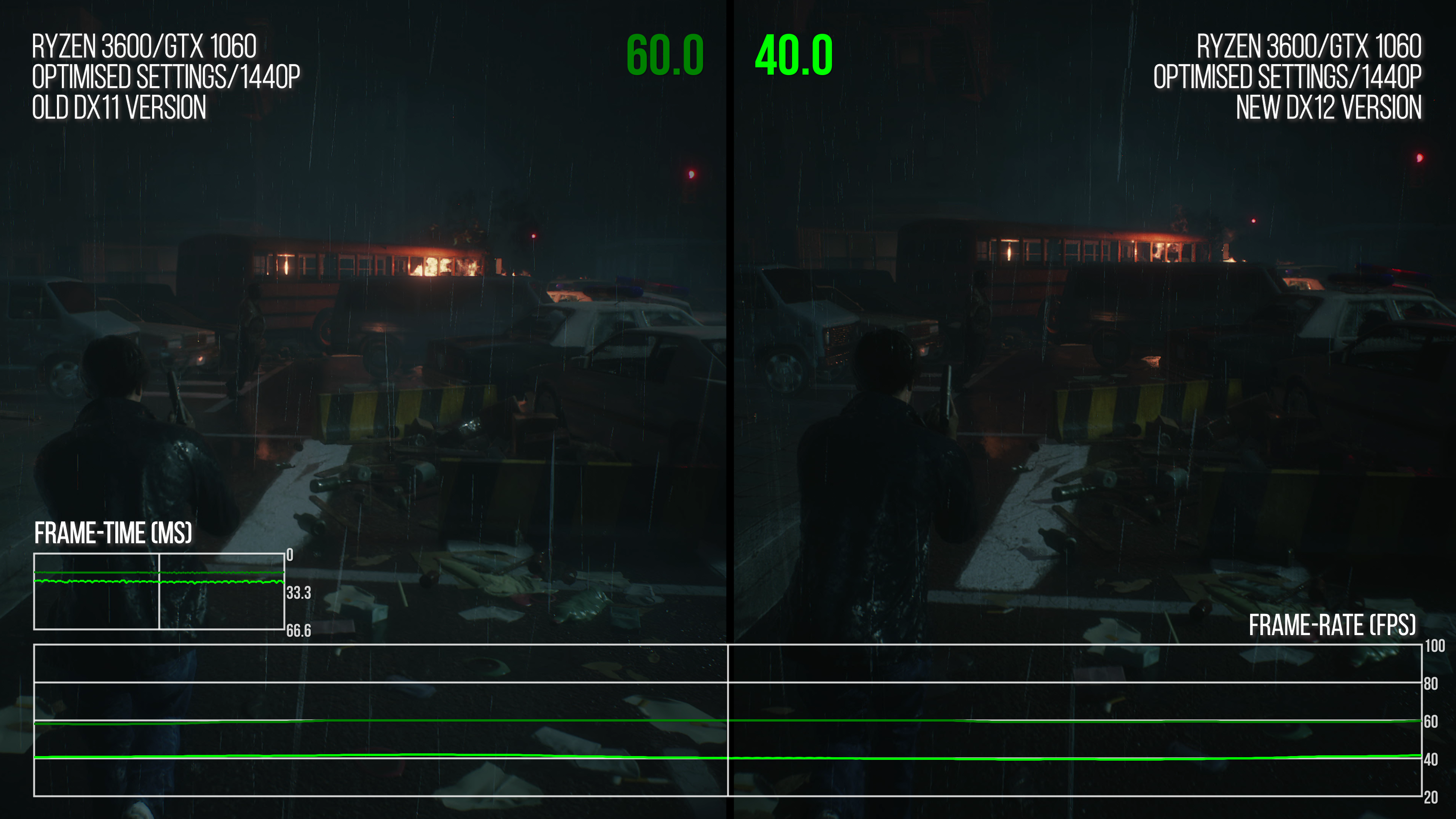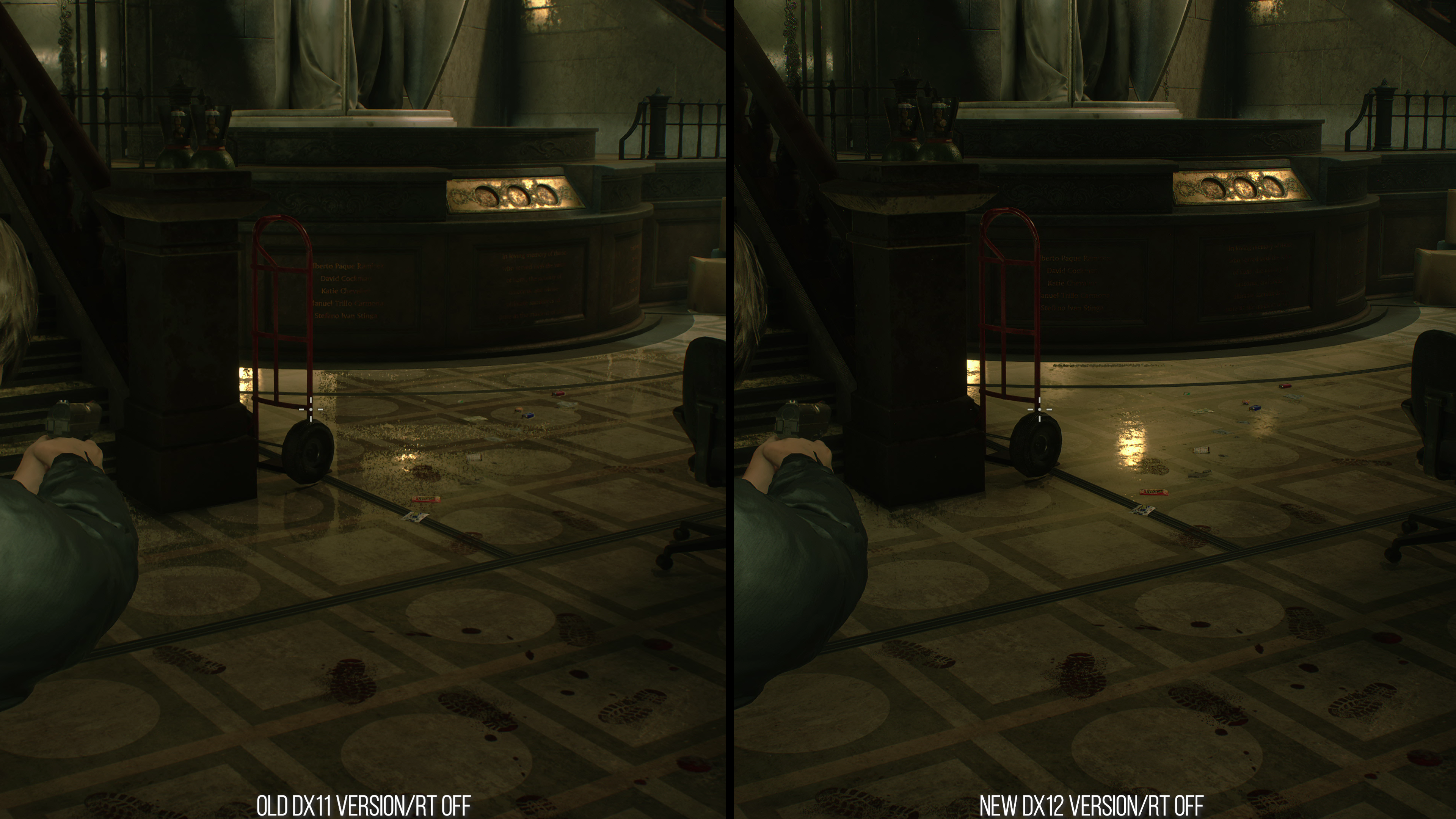In fact, the situation with these PC upgrades proved such a problem for so many users that Capcom quickly restored the older versions, available for download via a Steam beta branch. On the one hand, it is a positive move for Capcom to respond so quickly to the outcry from the community - but tellingly, it also demonstrates that the update is so flawed that even Capcom agrees that the existing versions had to be restored. The new versions are still the default download too, even though the vast majority of PC users are better served by the older builds. In putting together my critique, I focused on the most challenging game of the bunch - Resident Evil 2 Remake - though many of the points raised apply to the other titles. I’ve not got much that’s positive to say, but there’s no doubt about it: ray tracing support delivers a boost to overall quality, specifically because the RT reflections replace the awful screen-space reflections found in the older version. Ray-traced global illumination is also a good plus point, replacing screen-space ambient occlusion with much more accurate ambient shadowing and even including local bounce lighting on top of the static GI for dynamic elements. However, the RT is of a low resolution and quality, with no scalability upwards for more powerful hardware. Beyond that, another semi-hidden upgrade is the interlacing/checkerboard option used by the consoles and now working well on PC, a good way to boost performance with limited drawbacks (mostly on RT reflection quality and transparent effects). And really though, that is about it - if you want to check out the RT features, I’d recommend this patch. However, in all other scenarios, the ‘upgrade’ is poor and not worth your time or trouble - and that starts with performance. Turn off RT and compare like-for-like with the older version of the game and remarkably, there’s a huge drop in frame-rate for the exact same image quality. This appears to be because of a sub-optimal deployment of DirectX 12, whereas the older versions simply ran a lot faster on the old DX11 API. Tested on a GTX 1060, Resident Evil 2 Remake seems to be 25 to 30 percent slower in terms of average frame-rate - an astonishing state of affairs. At 1440p, that’s the difference between running 1440p at a relatively consistent 60fps or alternatively, running in the 40s on the new version. This is a damning indictment of Capcom’s DX12 implementation and it affects all GPUs, not just the GTX 1060 - even heavyweights like the RX 6800 XT and RTX 3080 are affected. On top of running worse by default, the older version of the game also offers a better graphical experience in several scenarios. If you’re not playing with RT enabled, the less-than-impressive SSAO is the only option. Bizarrely, Nvidia’s superior HBAO+ from the older build has been stripped from the newly patched game [UPDATE: HBAO+ can be enabled - this is achieved by ensuring that the RT toggle is in the off position]. Similarly, the super-sampling slider does not work in the new code, running and looking the same no matter what it is set to. Again, this works fine in the older version. Screen-space reflections - while hardly impressive in the older code - were operating correctly in the existing game, but that’s no longer the case with the new version. SSR also disappears completely when aiming the gun, something that didn’t happen in the older version (and this happens in console land too, if the PS5 build is anything to go by). And while we’re on the topic of broken features, Capcom simply must address its temporal anti-aliasing solution - which works just fine on consoles but doesn’t on PC, failing to varying degrees depending on the game. For example, in the recent Monster Hunter Rise, TAA flat-out does nothing whatsoever. In Resident Evil Village, it seems to have some degree of coverage but it’s a world away from the quality of the effect in the console games. The lack of effectiveness in the anti-aliasing solution is heightened still further by the baffling inclusion of a sharpening filter over which the user has no control, further diminishing the quality of the presentation compared to the generally fine console versions. So, unless you’re looking to use the RT features, my advice is to stay well away from the new patches. It’s a shame that the RT isn’t of a higher quality, but there is a way to get an improved effect if you have an Nvidia GPU. I used the Green Team’s DLDSR super-sampling option to downscale from 5120x2880 to 3840x2160. However, I also used AMD FidelityFX Super Resolution in quality mode in tandem. This essentially upscales from slightly under 4K to 5K, then we use the Nvidia super-sampling technique to downscale back to ultra HD. It seems to improve RT quality and even edges seem a touch improved. In summary, I’m happy to see that ray tracing has made the grade - especially as the RT alone doesn’t have a huge performance hit (even if the move to DX12 does!), but the bottom line is that even the sole positive point about the upgrade is still a bit of a disappointment. It could have been better - a sentiment that extends to the whole enterprise. Capcom added ray tracing but did nothing to improve issues with the existing game - such as the cut-back animation tick rates on the zombies, which become a slideshow with enemies at distance. It was a complaint I had back in the day, it could easily be fixed, but it’s still present in the updated game. It’s baffling why some features are added while at the same time outstanding issues aren’t addressed, while other features are bugged. All of that - in addition to the big cut to frame-rate. After the drama with Resident Evil Village, I honestly think it’s time for Capcom to re-think its approach to its PC versions. There’s no doubting the quality of the titles themselves, but a new and improved focus is required on technical polish. As the controversies continue, it’s difficult to avoid the sense that Capcom’s PC product just doesn’t get the same level of care and attention as the console builds and to put it plainly, PC users don’t deserve to be treated like second class citizens.

